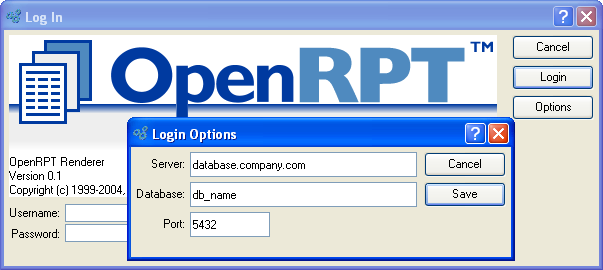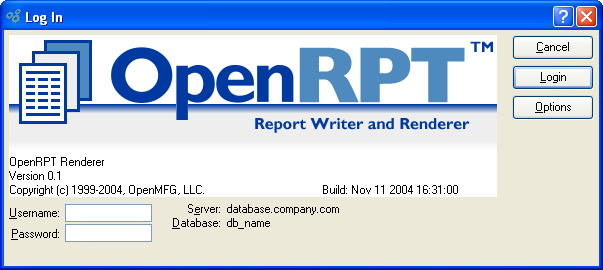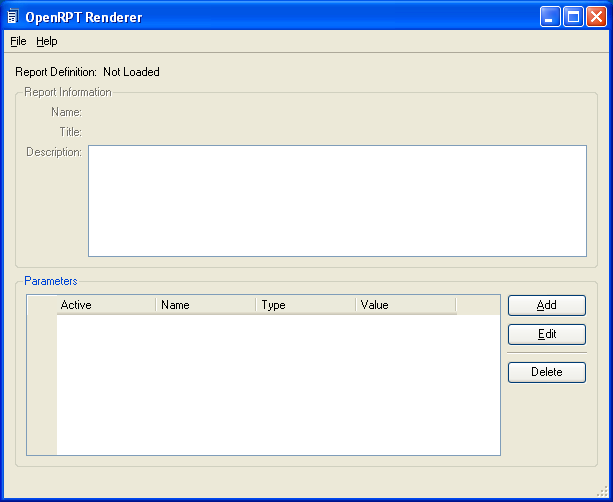
|
OpenRPT Product Guide |
To open the report renderer, locate the renderer application file on your system. It should be installed in a directory along with its required support libraries. These support libraries will vary depending on your operating system. Once you have opened the file, you will be presented with the initial log in screen, as shown in the following screenshot:

As you can see, the server and database information has yet to be specified. To specify connection details, select the button. The following screen will appear:

The report renderer is designed to connect to PostgreSQL databases. However, the application’s source code could be modified to enable connections to other databases, as well.
When specifying database connection details, you are presented with the following options:
Enter the host name for the server you want to connect to.
Enter the name of the target database.
Enter the port number for the target database.
Once you have entered connection details, the server and database information will display on the initial log in screen, as shown below:

Finally, we enter username and password information, then select the button. Once authentication is complete, the report renderer's main application screen will appear, as shown below:

As you can see, no report definition has been loaded yet. Once a report definition is loaded—and parameters defined, if necessary—we can run the report and print the results.
In the next section, we will look at a sample report definition—and later we will load this sample into the report renderer.